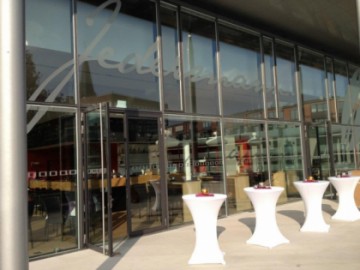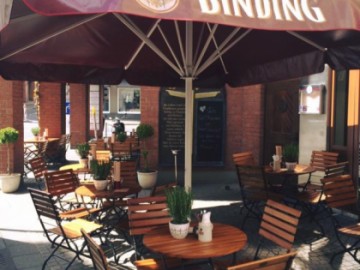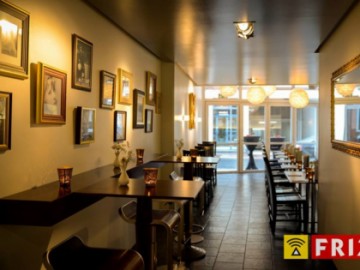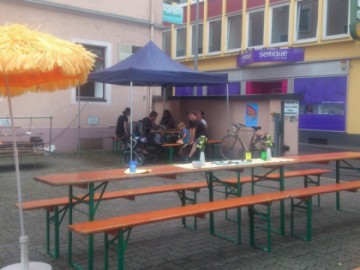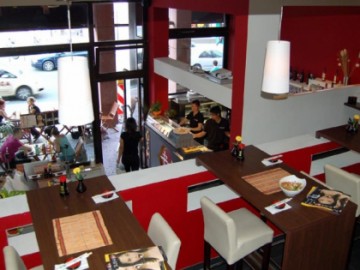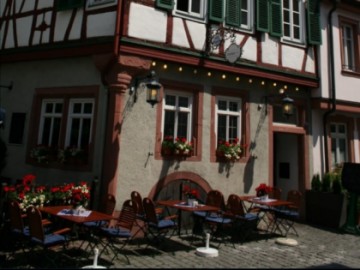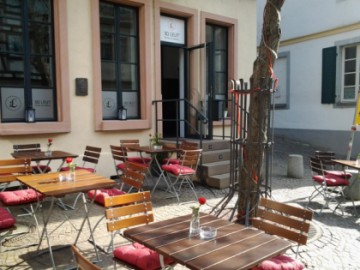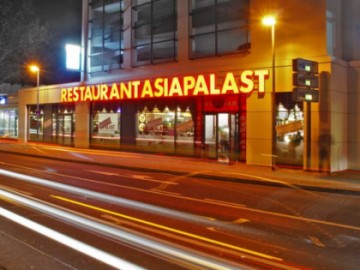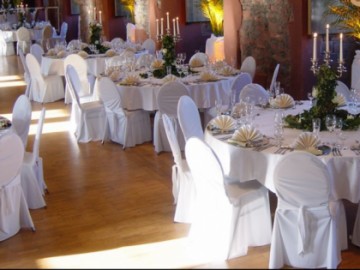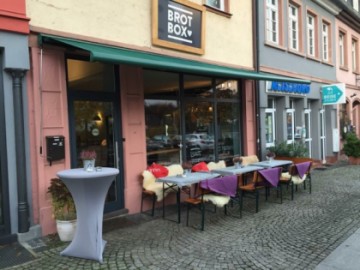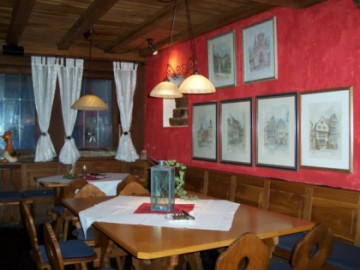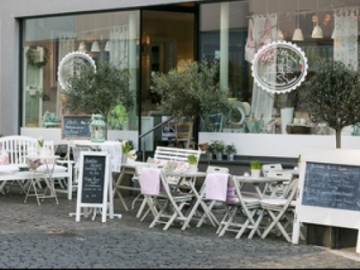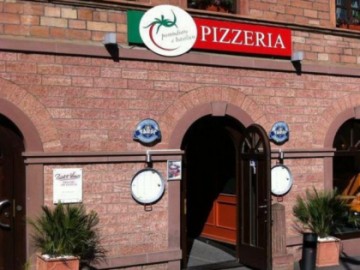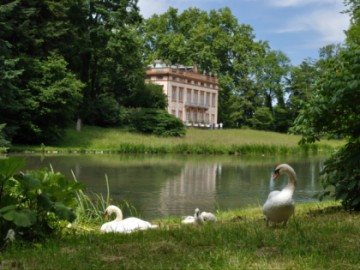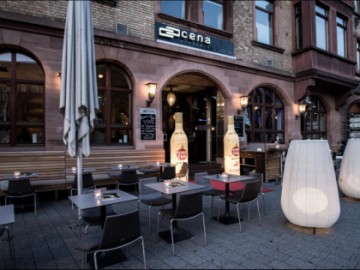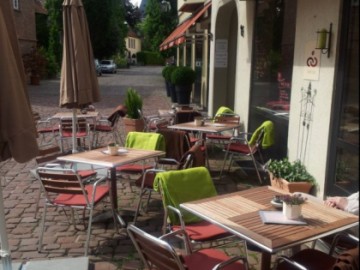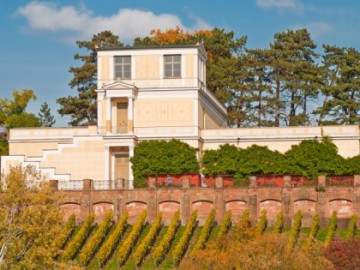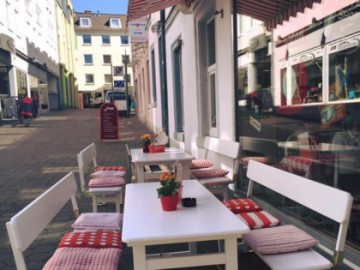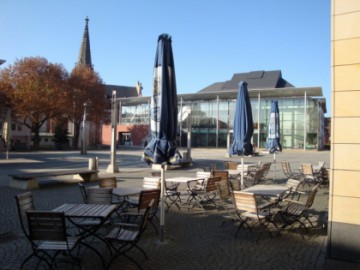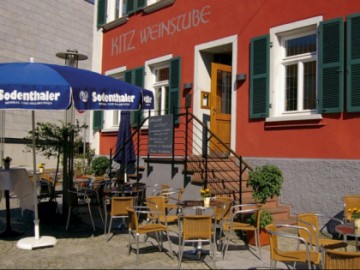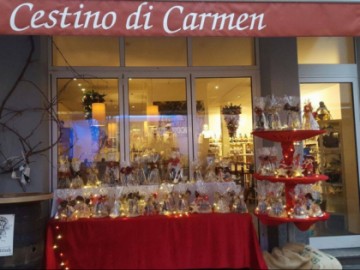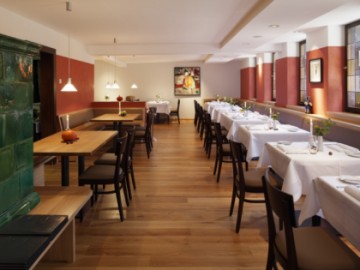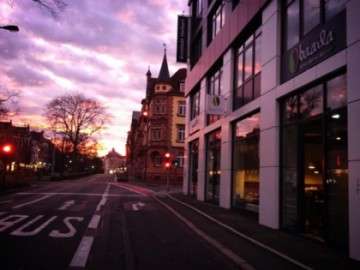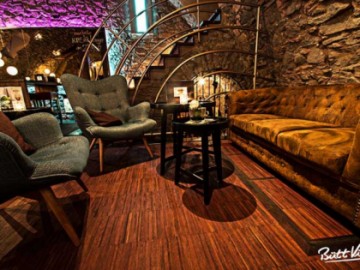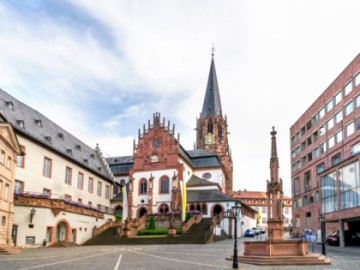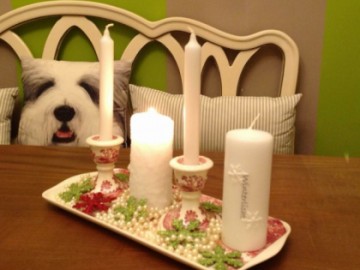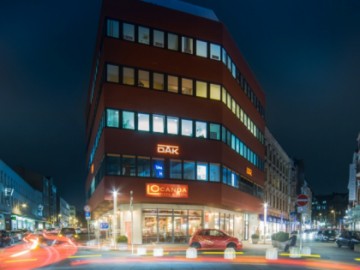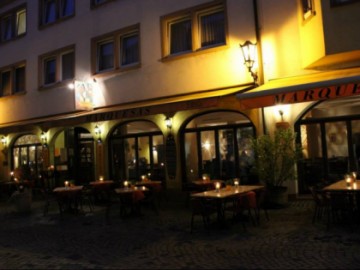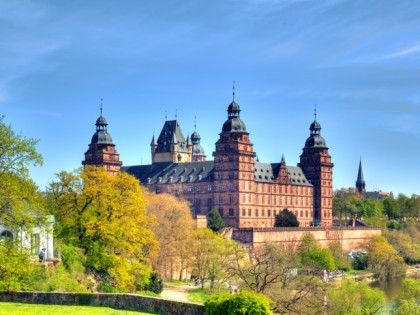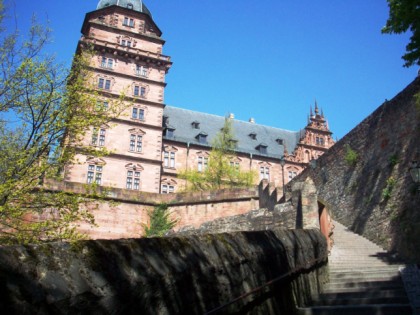Johannisburg Castle
Construction of the Johannisburg castle lasted from 1605 to 1614. The works cost a considerable amount – around 23 million euro in today’s money! Today Johannisburg is considered one of the most vivid examples of palace architecture of German Renaissance. This is one of the first castles in Germany that was built with a single design. Magnificent complex from red sandstone is notable for strict forms and almost ideal proportions.
The legend has it that in 1631, at the very end of the Thirty Years’ War, Aschaffenburg was seized by the Swedish king Gustav II Adolf. By that time the entire nobility had already left the town, that’s why it was only father superior of the Capuchin monastery, Bernhard von Trier, who came to meet the invaders as the first person. In conversation with him Gustav Adolf complained that he would have to burn the newly constructed castle down. But he had no other way out – he would not be able to take the castle with him. In reply to that the resourceful monk said that the castle only needed a push and pointed to the images of wheels decorating the windows of the first floor – symbol of the archbishop of Mainz. Swedish monarch liked the courage and wit of the monk so much that he decided to spare the castle, and the entire Aschaffenburg together with it.
Today several sections of the castle are opened for visitors. You must see the art gallery with its gem – the largest collection of paintings by Lucas Cranach sr. in Europe (9 paintings). Castle museum also functions here. Based on comments, visitors are most impressed by an unusual collection of cork wood models of famous Roman constructions. Court confectioner Carl May started creating it at the end of the 18th century, while his son Georg May finished in 1854. Among 45 monuments of architecture reproduced with extremely high precision there are Coliseum, Pantheon, triumph arcs honouring emperors Titus, Septimius Severus and Constantine.
